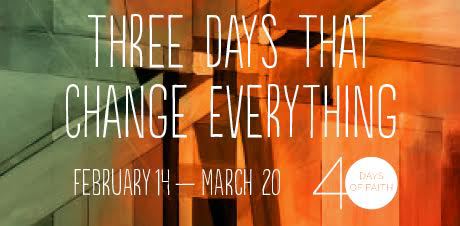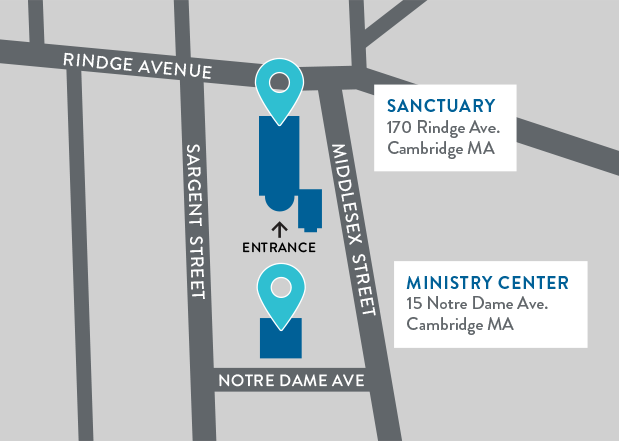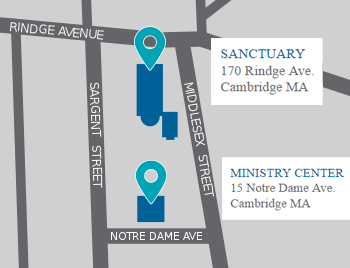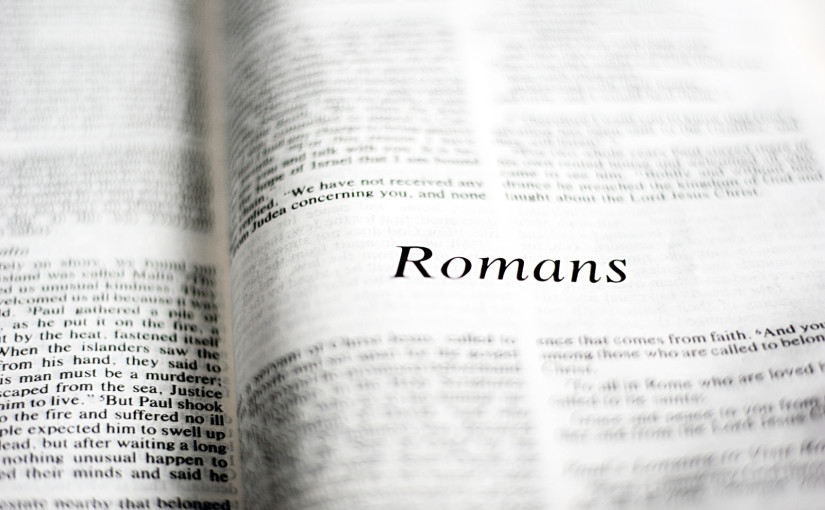I have exciting news to share – our city is almost at the bottom of a national survey about the Bible! Barna – a United States firm that researches faith, religion, and culture – releases a research brief each year on “America’s top Bible-minded cities.” They study the Bible reading habits and confidence in the Bible’s accuracy and principles in America’s 100 largest metro areas. Unsurprisingly, winners tend to be Southern Bible belt cities. And this year, our Boston to Manchester, NH region dropped to 99th place. That’s right – in 2015, we were the third to last Bible-minded city, and now, we’re second to last. We have only Albany, NY to pass before we can take the crown!

It might be surprising for you to hear from a pastor, but I see this as at least partly great news. Don’t get me wrong. I’m really committed to the Bible. Daily Bible reading was the first spiritual practice recommended to me when I became interested in Jesus as a teenager, and I’ve been at it – more or less – ever since. I’ve read every one of the Bible’s 1,189 chapters multiple times, some of them hundreds of times. I’ve taken graduate courses in Bible, studied the New Testament’s first century Greek language, and taught Bible in churches, on college campuses, and in public school classrooms.
But all that Bible reading has convinced me that long-time readers can miss the point of the whole thing, losing the forest for the trees. People read the Bible like it’s a book, rather than a library of books. Like it’s addressed to and primarily concerned with 21st century Americans rather than ancient peoples. Like it’s a rule book, or a recipe book, or a history book, rather than something more varied and more complicated and more beautiful than that.
So in our region’s relative unfamiliarity with, or perhaps disinterest in the Bible, it seems like we’re in a great position to have a fresh experience with these ancient texts – to hear their story anew, to discover what they’re telling us about Jesus, and to use them as a tool to guide our prayers, enrich our thinking, and enhance our lives. We hope this can happen for you, and that this 40 Days of Faith can help. (Just don’t tell a pollster – I’m gunning for Albany’s bottom spot!)
Our church has produced these Bible guides annually for a dozen years. Each year we take a different section of the Bible, this year in the New Revised Standard Version, and read it together in 40 daily doses. This will be followed by two sections:
- Points of Interest—a handful of comments, which include literary or historical notes as well as impressions, thoughts, questions, and reactions. These aren’t meant to be exhaustive or authoritative, but simply to give you some more perspective to work with as you ponder the passage yourself.
- Taking It Home—every day, there will be some experiments to try, or prompts for prayer. These invitations will focus on some of these areas:
- For you: How does this passage apply to you or your family?
- For your six: Consider six of your favorite people, people you interact with on a regular basis, who don’t seem to have much of a direct connection to God, but for whom you are very much rooting. What does this passage have to say to them, or to you about them?
- For our church: How can we apply the passage corporately as a faith community?
- For our city: What does the passage say about or to our entire city?
The Daily Bible Guide, while it can certainly be a standalone product, is designed to be one component of a bigger package called 40 Days of Faith – a six-week faith experiment that includes sermons, small group discussions, further prayer exercises, and more. You can learn more about the full 40 Days of Faith in this year’s User’s Manual, available on the campus and at the website of Reservoir Church. And the guide itself is available in various forms: paper, blog, and now podcast. Look online at www.reservoirchurch.org or right her on the blog.
About Romans
By the late 50s A.D. a Jewish man named Paul of Tarsus had spent twenty years travelling about the Eastern Roman empire telling people about Jesus and helping them start small house communities for people who wanted to worship and follow Jesus together. Paul hadn’t yet been as far West as Rome, but the message of Jesus had preceded him there, and he was hoping to visit soon, to see these house churches, and enlist their support for a mission to the farthest reaches of the known world.
The Roman Empire was the largest in the World, just bigger than China. Rome was also the largest city in the world at this time, with a population of about a million people, so for its residents, it was the center of culture and commerce and power of the whole known world. In the late 50s, Nero was in his first decade as Emperor. When he came into power at age seventeen, it would have been with the usual fanfare. Nero would maintain and expand the peace and glory of the empire. The good news of his reign traveled through all the earth. Caesar saves! The great Roman fire of 64 A.D. hadn’t occurred yet, nor had Nero’s subsequent burnings of members of the new Christian sect. So Nero wasn’t infamous yet, just notable. He’d reestablished chariot races and gladiatorial battles. Rumors of his prodigious sexual exploits circled about the city – his lovers are his wives, his slaves, his friends, his family members, or perhaps all of the above. At age 18, he poisoned his step-brother; by 22, he’d have his mother killed. By 31, he’d be condemned to be flogged to death by his own state, only to beat them to it by killing himself.
Male Roman citizens enjoyed relative peace and prosperity in this era, while women were literally second-class citizens, and many others – including slaves and Jews – lived as third-class outsiders in this highly status-conscious society.
It was to house churches in this city and this era that Paul wrote his letter that became known as Romans. Romans is one of seven New Testament letters scholars are sure Paul wrote, one of thirteen attributed to him. It’s the longest of the bunch and historically, it’s been the most important. Every big name thinker and reformer in Christian history has had a read on Romans and lots to say about it. But, of course, they haven’t all agreed on their interpretations.
Before addressing more practical concerns, Paul presents a sweeping interpretation of the meaning of the life of Jesus, placing it in Jesus’ Jewish context and subversively borrowing Roman imperial propaganda to describe God’s good news given through Jesus. In doing so, Paul’s interested in God’s story and our story, and how they intersect. On God’s end, Paul says it is good news that the fulfillment of God’s purposes for history and the vindication of God’s character and justice have come to pass. On our end, there’s good news of personal renewal, renewal of the whole Earth, and the transformation of human society as well. Followers of Jesus now find themselves part of a new community, where mutual acceptance and unity – Paul insists – are more important than status. And Paul’s especially eager to see status-conscious Romans embrace this reality.
Paul is something of a cultural and historical big deal. He helped shape what it meant to be a follower of Jesus, and a community of followers of Jesus, not just in the Roman Empire, but for all of history. Yet for all that, he’s kind of difficult. Sometimes he’s ornery, like he’s in an argument we’re only hearing one side of (which is, in fact, probably the case). Sometimes he says things that seem harsh or befuddling or contradictory. His sentences and thoughts tend to run long and complicated. Take a breath, we want to say! In fact, one Pauline scholar, a man who’s made a career studying these letters, wrote a book called, “Jesus Have I Loved, but Paul?” This is its own play on words with one of the most difficult passages we’ll encounter in Romans, and the implication is something like, “You, Paul, can be a real pain.”
That said, why Paul? And why Romans?
Did I mention that it’s the most famous, most high impact take on the Jesus story ever written, not just in the Bible, but in the past two thousand years? I thought that would inspire us.
Also, in a dozen or so Bible guides, we’ve read poetry and history and biography but we have never dipped into these thirteen Pauline letters, and it seemed about time.
Additionally, when you get past Paul’s intensity and inscrutable sentence structure, he’s actually a pretty fascinating author to read. Maybe you don’t want him as your friend, but there is no doubt you would follow him on Twitter! He’s what some anthropologists would call a third culture person. He was born and raised Jewish, lived much of his adult life among Gentiles, but wasn’t fully accepted or appreciated by either community. He was trained to be a conservative Bible scholar and rabbi. Yet his passion for Jesus – discovered almost despite himself – and his desire for all people to be able to access faith and community in Jesus alienated him from parts of the Jewish community. In his writings, he’s consistently working out how the life of Jesus can bring joy and purpose and wellness to all people, who can then live in rich, interdependent community with one another.
Perhaps most importantly, reading Romans seemed a great way to help us discover the significance of Jesus for ourselves, and in our times, again. Perhaps we’ll even fall in love with Jesus ourselves, and find some of the same joy and purpose and wellness and community that Paul’s first century readers did as well.
One final note before we begin. I’m thankful for the many Bible scholars I’ve read over the years. These are people who have spent their careers trying to illumine these ancient texts for modern readers. Two great sources that have been particularly influential in my preparation are the published work of Robert Jewett and N.T. Wright. I’ll be sharing their insights again and again – consider them credited.
Jewett, Robert. Romans. A Short Commentary. Minneapolis: Fortress Press, 2013.
Wright, N.T. The Letter to the Romans. Nashville: Abingdon Press, 2002.


